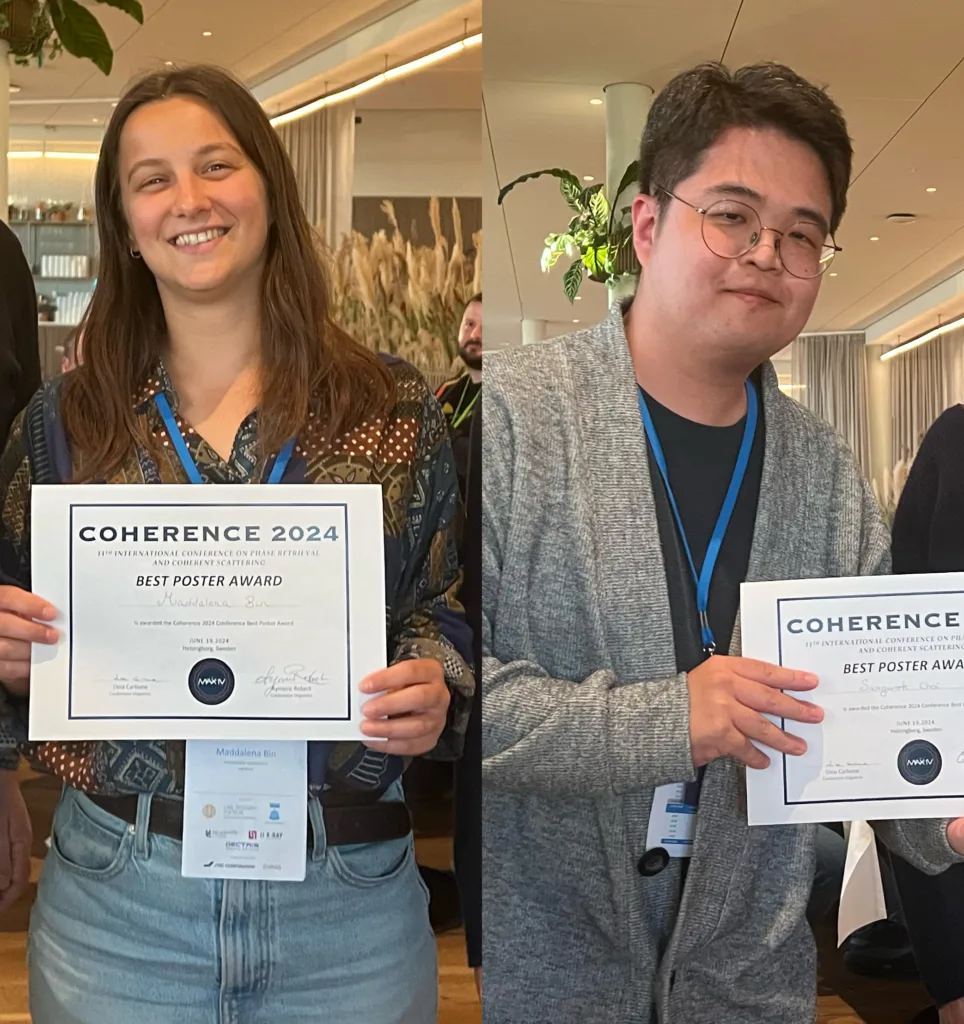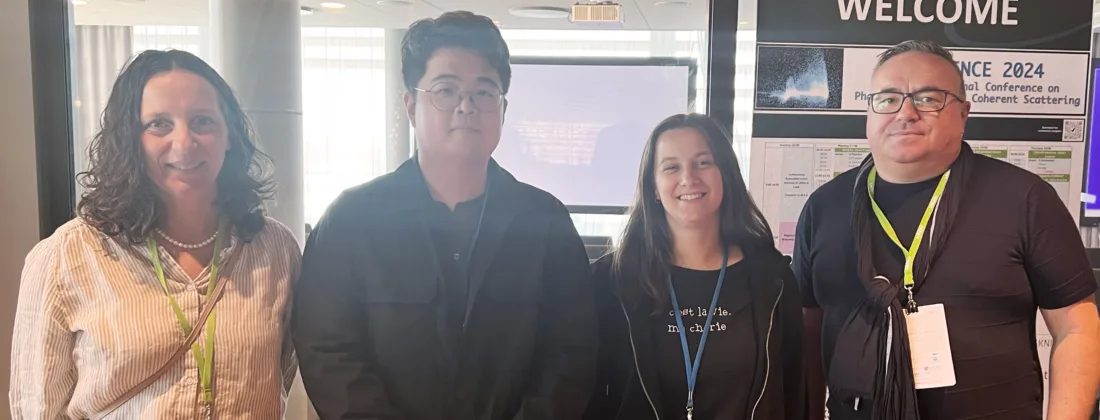Experimental techniques that build on the coherence property of light attract a lot of interest in Sweden and internationally. MAX IV, as the first fourth-generation lightsource, is very coherent and offers plenty of opportunities for development. Recently, the Coherence Conference was held in Helsingborg, and two early career scientists were awarded the poster prize.
About 120 researchers worldwide attended the Coherence Conference to discuss best practices, new findings, and future development of research techniques principally relying on X-ray Coherence. MAX IV organized the conference in Helsingborg during the week of the summer solstice. Young researchers, such as the two poster price awardees, are essential to growing and developing the field.
“I decided to participate in the Coherence Conference because it is a leading platform for exchanging ideas and exploring the latest developments in X-ray Photon Correlation Spectroscopy (XPCS), a coherence-based technique. The opportunity to engage with researchers not only from Sweden but from around the world and to present my work to a specialised audience was invaluable,” says Maddalena Bin from Stockholm University, one of the Poster prize awardees.
Her poster focused on the molecular dynamics of the protein ferritin in a cryoprotected solution.
“Specifically, we measured diffusion of the protein to study the effect of glycerol on biological solutions down to cryogenic temperatures. Our experiment revealed an important deviation from the expected behaviour below -43°C. This new observation could potentially advance our understanding of cryopreservation technologies and cryostorage of biological material,” explains Maddalena Bin.
Maddalena Bin benefits a lot from X-ray coherence techniques in her research.
“The X-ray technique I employed can resolve collective nanoscale dynamics ranging from microseconds to hours. It plays a crucial role in my research by allowing me to access diffusion of proteins at their molecular length scales,” says Maddalena Bin. “I would like to see more development of XPCS at MAX IV. The large degree of coherence of the beam and the new fast detectors that are now available would enable us to measure the dynamics of protein systems down to microsecond time scales.”

Sungwook Choi, the other awardee from Sogang University in Seoul, South Korea, travelled to Sweden for the conference.
“It is a unique conference and the only one that specifically focuses on coherent scattering techniques,” says Sungwook Choi.
He presented a poster on identifying the dynamics of dislocation during exsolution using Bragg Coherent X-ray Diffraction Imaging (BCDI). Exsolution is a phenomenon where catalytic metal nano-islands form on the surface of a perovskite host by extracting doped metals from the host material under specific environmental conditions.
“In our study, we observed that dislocation evolution occurs at the onset of exsolution, with these dislocations initiating deep within the bulk of the host material and expanding toward the surface. Based on the results, we proposed that the nucleation and growth of dislocations themselves could serve as a pathway for exsolution, particularly in the deep bulk regions of the host perovskite,” explains Sungwook Choi.
Coherent X-rays are essential for Sungwook Choi’s work.
“We could probe deeply, enabling three-dimensional (3D) imaging of nanocrystals with a few hundred nanometers in size and induced in-situ environmental conditions. We created a real-time 3D map of the elastic response throughout the entire nanocrystal, leading to the discovery of previously unknown dislocation evolution during exsolution,” Says Sungwook Choi.
Sungwook Choi also visited MAX IV for the first time during the conference.
“While coherence-based X-ray techniques reveal new scientific insights previously inaccessible with traditional methods, they also come with significant challenges. Therefore, I see a growing importance in developing a comprehensive approach that integrates these techniques with other X-ray measurement methods. I anticipate that MAX IV will evolve into a platform capable of offering such an advanced workflow,” concludes Sungwook Choi.




